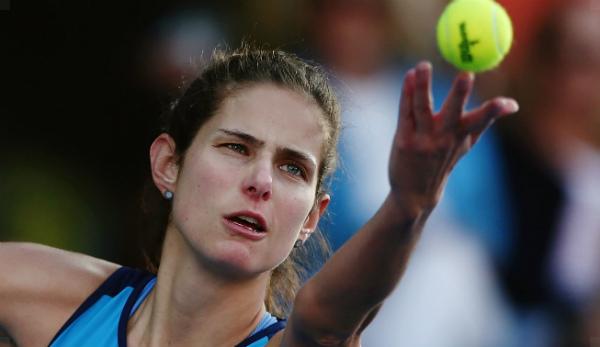That Julia Görges is a fantastic serve should be well known. The current statistics of the WTA prove this impressively: “Jule” is the service queen of the previous season.
Görges is at the top of four of the eight tables listed by the WTA for the complexes serve, return and break points. For comparison: Simona Halep (Romania), the new French Open winner, won “only” two categories.
After more than half of the 2018 season, Görges, for example, is the leader in the points won after the first serve with 72.8 percent. Surprisingly, the Czech Kristyna Pliskova (WTA No. 73) ranks second with 71.8 percent. Her sister Karolina, the aces queen of the past years and number seven in the tennis universe, has to make do with rank 6 (69.1 percent).
Görges also won the most service games (79.3 percent) and scored the most service points (63.6 percent) compared to her colleagues on the tour. In both categories the Australian Ashleigh Barty is the first pursuer of the world ranking 13th from Bad Oldesloe.
But “Jule” also has nerves of steel. When things get tight, the 29-year-old usually stays cool – and can trust her serve. Proof? 65.1 percent of the break points have been defended against Görges since January. None was better!
Industry leader Halep, however, who won her first Grand Slam title at the Stade Roland Garros last Saturday and was duly celebrated in her home country at the beginning of the week, is the best so far in 2018 in terms of “won return points” (50.4) and “won return games” (50.2) – Angelique Kerber ranks third (48.4 percent) and fourth (46.2) in these categories.
Maria Sakkari (54.5 per cent) from Greece is at the top of the break points. Barty is the leader in points won after the second service (54.7 percent).
Recently, Görges, who won the title in Auckland at the beginning of the season, said about her serve in an interview with tennisnet: “For me it has always been a great strength – with the potential to develop it further. It has always been important to me that I make my service games variable. “I can serve any kind of twist, so I’m more unpredictable.” It is an advantage to know that you get a few free points. “This is also positive for the mind.”
But when she was a teenager, she didn’t really like refining the service. “You want to play and gamble for points,” Görges said with a smile: “But when you see what a serve can do, what you can do with it, when you notice the improvements as a player – then it gets interesting.”
And if you could see the next day after training, “oh, he’s coming, now I’m going to try him a second time”, then “the moments of happiness are motivating. Then you stay on it.”














You must be logged in to post a comment Login